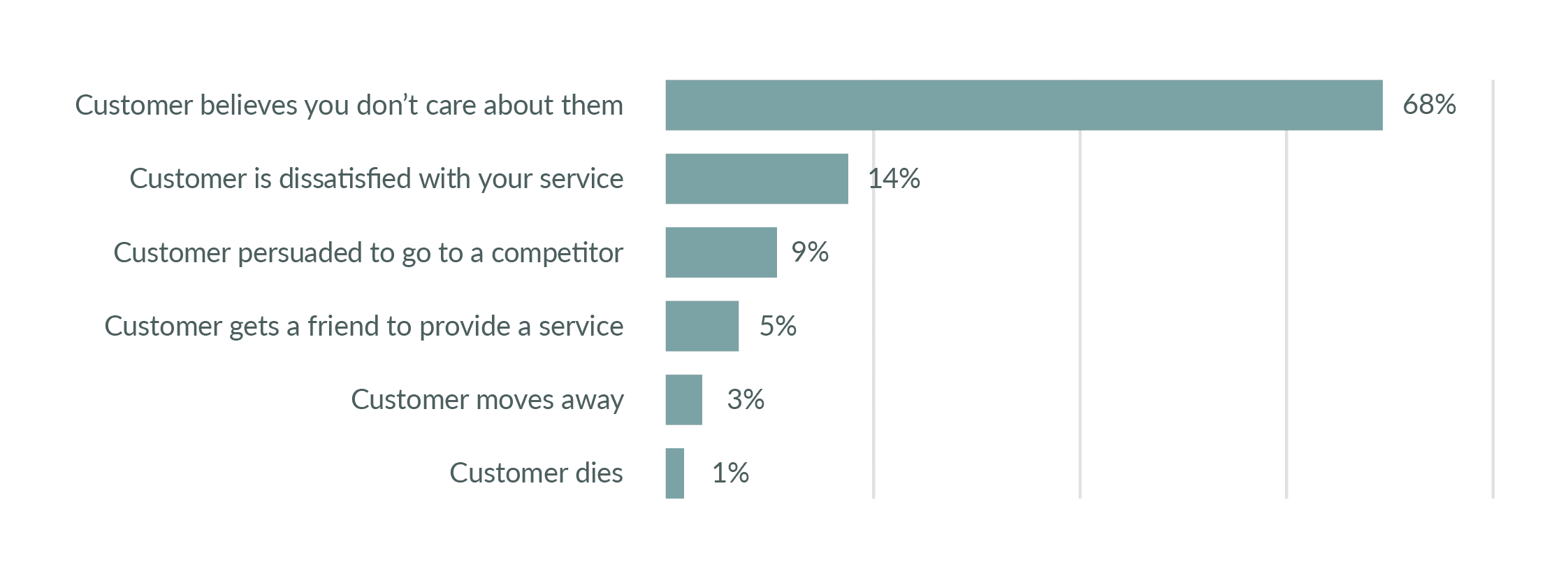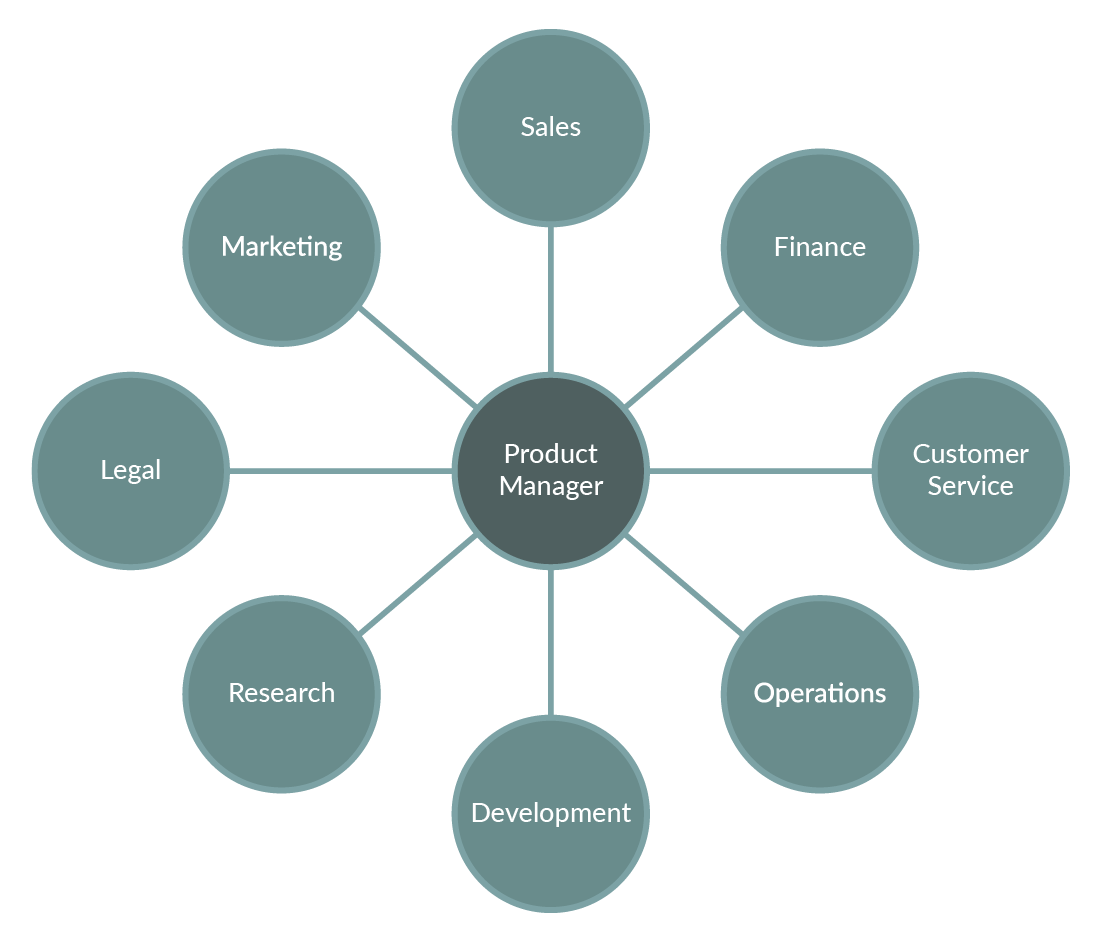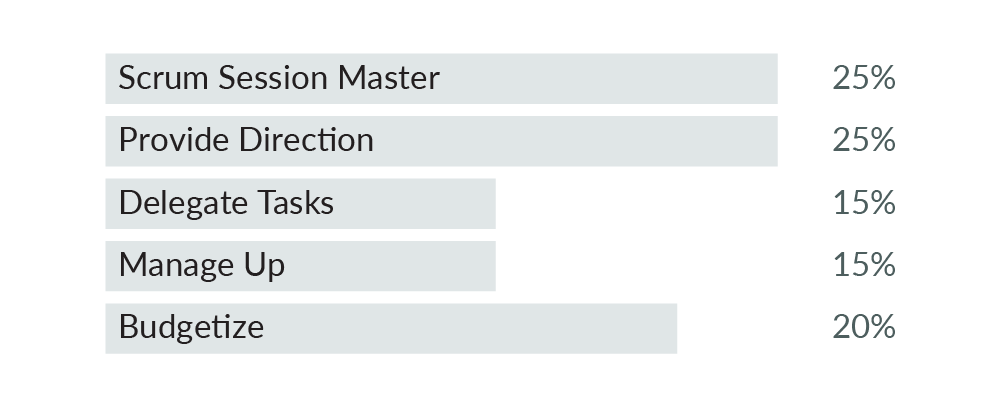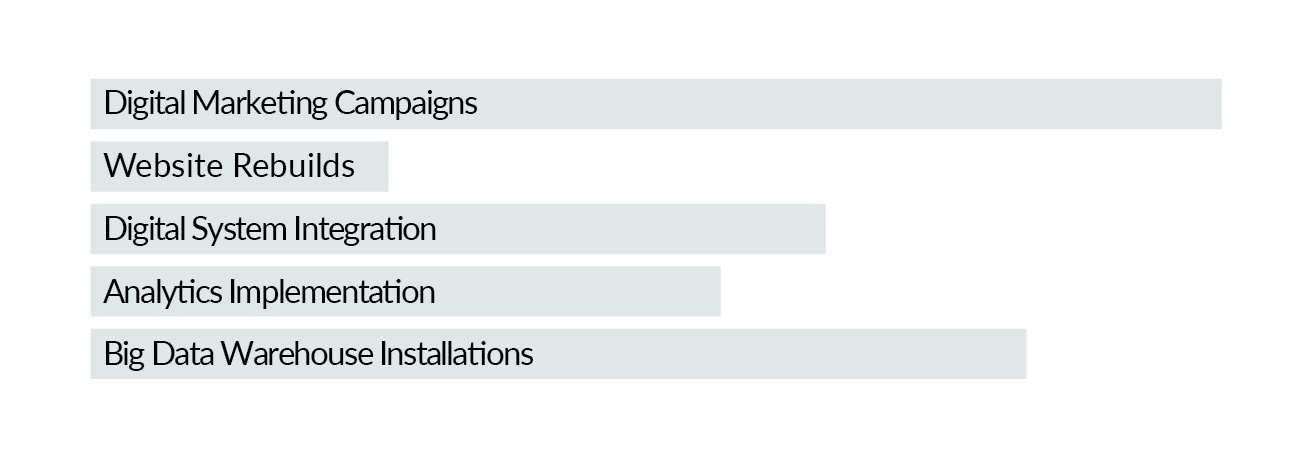In today’s internet-driven world, customers have more power than ever. If customers have a positive customer experience, they will share this experience with friends, family, and connections, which in turn can lead to new business. All at zero cost. But what happens if you fail to provide a positive customer experience?
The answer is simple. Your customers will complain.
According to research by Esteban Kolsky in his ThinkJar report for CX Executives, 13% of unhappy customers will share their complaint with 15 or more people. Furthermore, only 1 in 25 unhappy customers complain directly to you.
Why do Customers Leave a Company?

www.superoffice.com/blog/customer-complaints-good-for-business
Posted by Steven MacDonald on 4 January, 2019
Roles of CX and Digital Leaders
To help bridge the gap between customers and products, the roles of UX and Digital Product Management are becoming more and more important. Along with helping digital transformation projects, a Digital Product Manager who understands the customer who, has a feel for both CX and UX, and who knows how to prioritize product features and requirements based on that customer intel is in high demand.

So how do CX and Product Management work together in cross-functional teams to get the products developed in a customer-focused manner and be able to support both digital natives as well as other segments that just use digital tools and services here and there. It’s a juggling act for sure!
Solving for Both CX and UX
As CX leaders, we should reach out to our product managers and by using tools such as Customer Segmentation, VoC/VoE research, Journey Mapping and Customer Personas as a practice — to explore products and services through the lens of our customers to gain useful and relevant insights. This allows us to see both the big picture of Customer Value/Needs/Behavior as well as the more product interaction to help improve customer satisfaction and reduce friction or drop off moments.
Using CX methodologies, we can explore how key segment groups are using our digital products, services, and apps and look for ways to identify key Moments of Truth and ID and remove barriers and pain points.
Though the demands and expectations of “Molly Millennial” are quite different from those of “Gerry Gen X” and may be increasingly digital, we still can’t alienate our “Samantha Senior” omni or non-tech segments either.
We recommend frequent use of VoC/VoE and detailed CX maps along with digital experience audits at the product level for a handful of segments, which can get us to clear and concise things to do or stop doing to improve our product usage, adoption, ease, and customer satisfaction. Using benchmarks is also a good way to diagnose our digital health across products, apps, and services by comparing ourselves to others who are best in class.
Digital Project Manager
Digital Project Managers understand the scope and scale of online-based projects and organize their teams and budgets accordingly.
Lao Tzu
“A leader is best when people barely know he exists, when his work is done, his aim fulfilled, they will say: we did it ourselves.” – Lao Tzu
Five Skills

The Key Skill
The nature of front-office projects is one that generally involves a highly co-operative project. Not only do you need developers and testers, but you might need artists, user experience and web analysts, or more. As a result, THE key skill of a Digital Project Manager is the ability to be a strong scrum master who knows how to be a gatekeeper and not just a facilitator.
Popular Projects

Greatness
Across the web/app/software development industry, consensus seems to be that finding project managers is easy, but finding great project managers is a constant organizational challenge.
Checklist for Getting on the Same Page to Delight our Customers
- Make sure your leadership and your team agree on WHO is our customer
- Ask for customer research before developing new products and services
- Do regular digital experience audits to continuously improve the customer experience within all digital channels and keep an eye on what is also happening in non-digital channels
- Use Customer Journey Maps with user personas to develop user stories and design experiences that are segment/audience appropriate
- Use VoC surveys to diagnose and resolve customer complaint issues
- Use CX research to prioritize product features and enhancements (don’t do it if you can’t back it up with research!)



